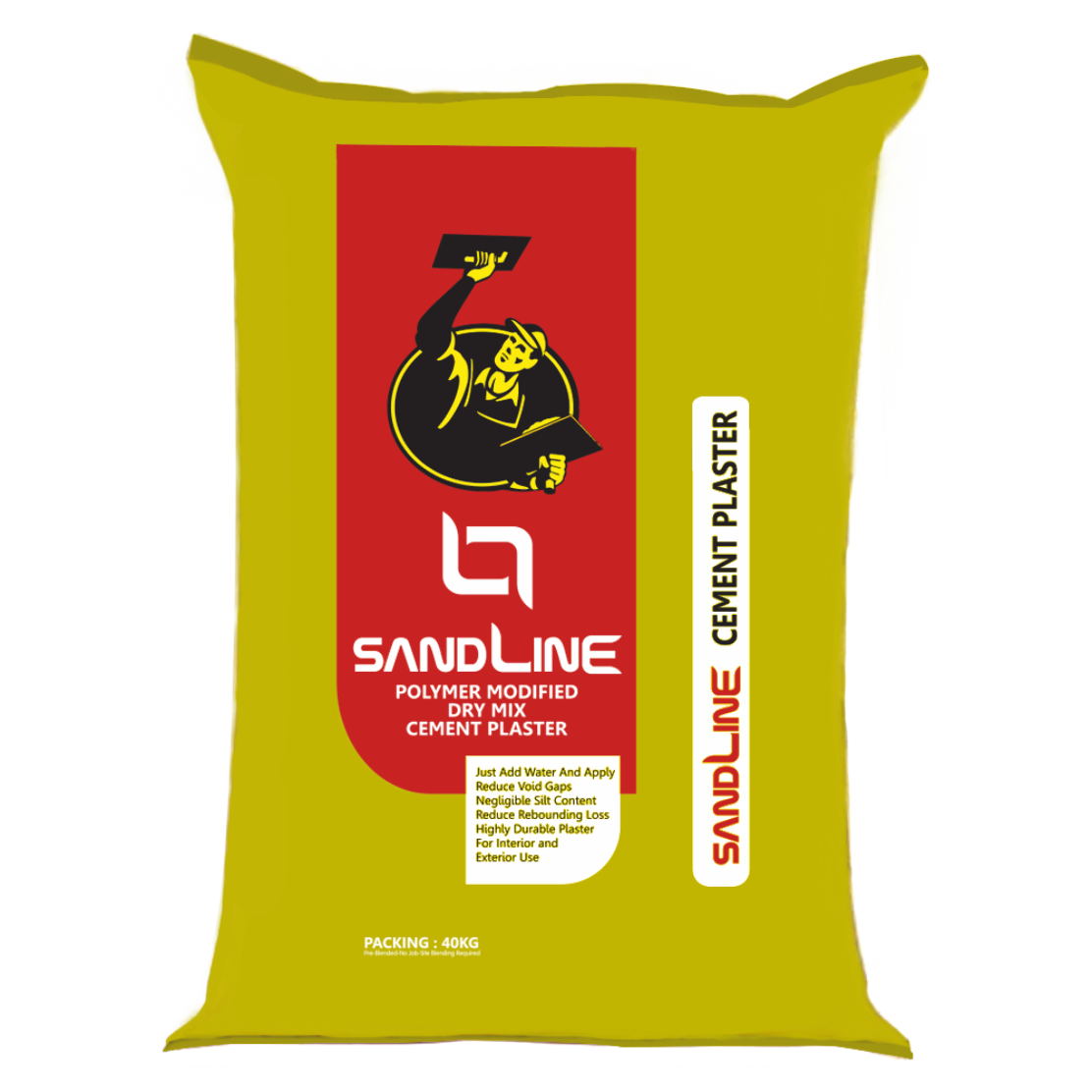Product Description
Sandline Dry Mix Cement Plaster SL 303 is a premixed cement-based solution to substitute for the traditional site mix wall plaster process. Sandline Dry Mix Plaster can be used for both external and internal plastering. It is convenient, easy to use, stronger and bonds better to its substrate. Provides an even surface on which tiling can be done faster and efficiently. The solution consists of processed sand which is graded and distributed as per particle size and proportionately mixed, cement, and water soluble polymers which act as additives. The application method requires mixing of water before application and the mix is ready for plastering.
|
Sandline Dry Mix Plaster (Grade 1)
|
TECHNICAL DATA SHEET
|
|
APPEARANCE/ COLOR
|
Dry granular powder/ Cement grey color
|
|
COMPOSITION
|
OPC, processed mineral aggregates and chemical additives
|
|
DENSITY
|
Dry 1.589 KGS / LTR, Wet 1.747 KGS / LTR
|
|
WATER REQUIREMENT
|
15 % of the total quantity
|
|
MAX. GRAIN SIZE
|
1.2 mm
|
|
COMPRESSIVE STRENGTH
|
5 N/mm²@ 28 DAYS
|
|
FLEXURAL STRENGTH
|
1.0 N/mm² @ 28 DAYS
|
|
WORKING TIME
|
60 MINS
|
|
CURING
|
Curing should be done 2-3 times for 2-3 days. In abnormal weather conditions, curing for 5-7 days is required.
|
|
SHELF LIFE
|
6 months from date of manufacture if stored in dry condition.
|
Application Procedure
Surface Preparation: The surface should be rigid, and free from oil, grease, paint, loose plaster or any other dirt particles. Wet the wall before application of plaster.
Mixing: In a clean bucket mix thoroughly one 40kg bag Sandline Dry Mix Cement Plaster SL 303 with appropriate 6-7 liters of clean water (Depending upon Climate Condition). It is recommended to use mechanical mixer to achieve a homogeneous mix. For large quantity a mixer such as a concrete mixer can be used. Allow the mix to mature for 5 minutes before application.
Application: The mixture should be applied within one hour of preparation. If the concrete surface is smooth and dense, it’s recommended that the surface is made rough for better bonding of the paste layer. Apply the mixed plaster uniformly on the prepared substrate using a steel trowel. The plaster can then be leveled to a desired finish using masonry tools. Different finish can be achieved using steel trowel, wooden float or sponge, as per finish required.


